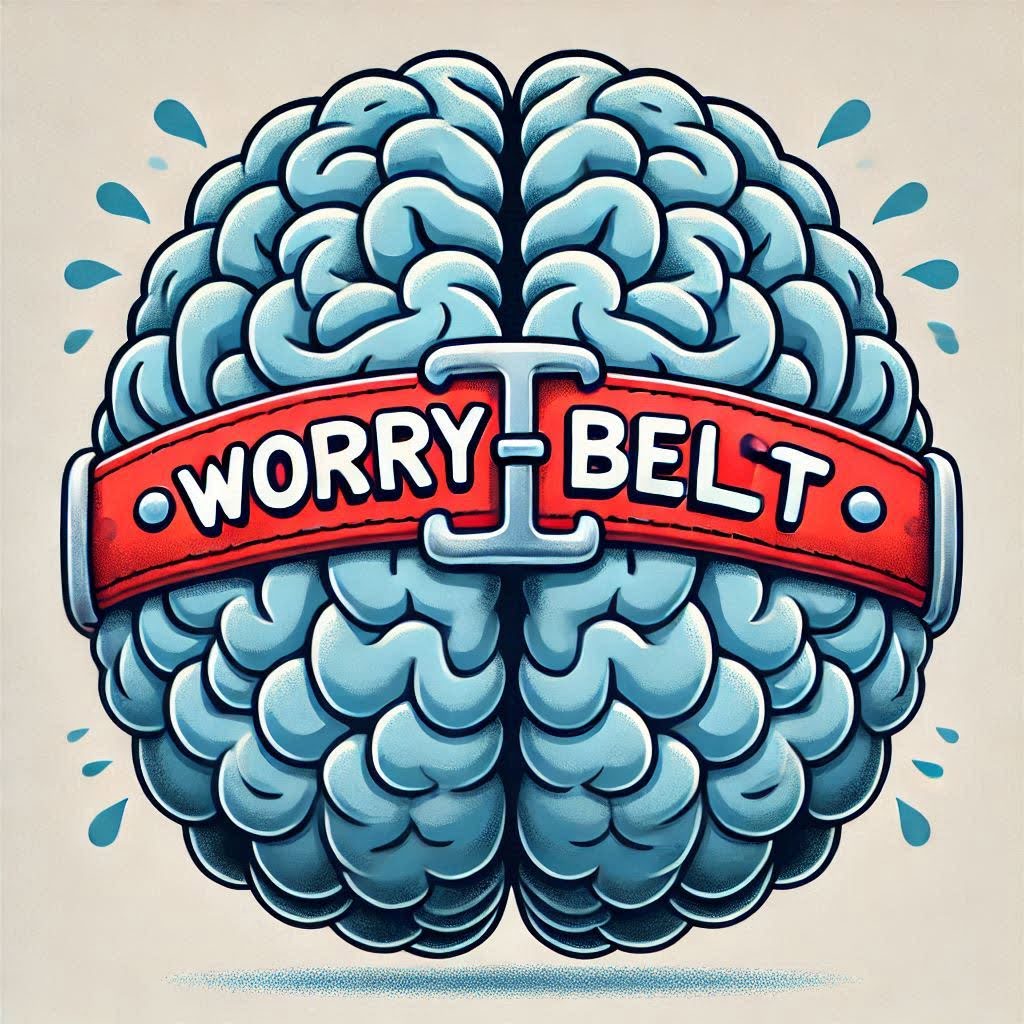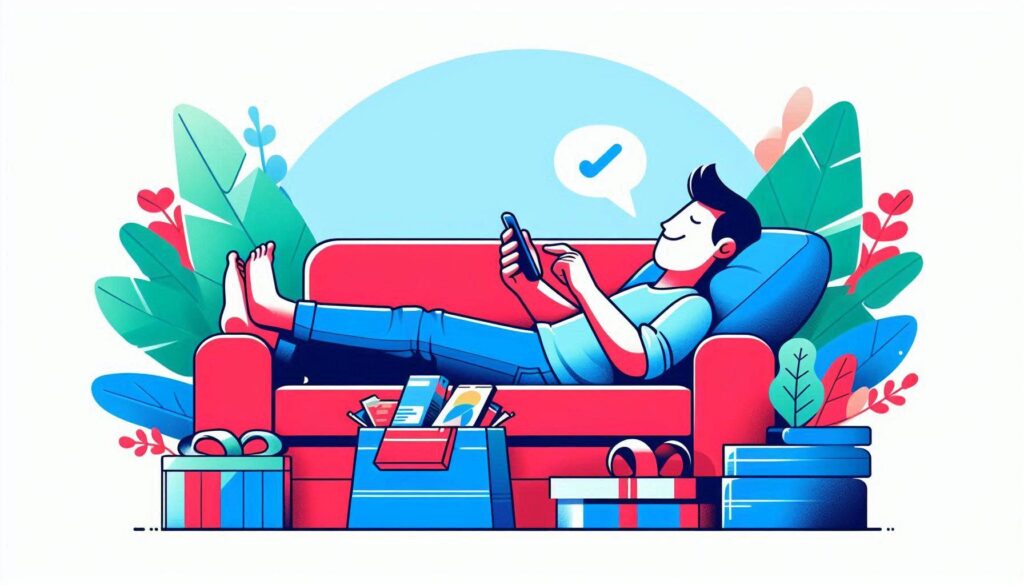
Introduction: The Moment of Realization
This morning, as I moved through my usual routine, something unexpected happened. I was standing in front of the mirror, fastening my belt—a good belt, sturdy and reliable, unlike the ones I’d worn out in the past. Yet, as I adjusted it, an odd thought crept in: What if this belt eventually wears out too?
It wasn’t a pressing concern, just a quiet worry about the future. Would I have to deal with fraying edges or stretched holes someday? For a moment, my mind spiraled into the absurdity of future inconvenience. But then, almost out of nowhere, a simple realization stopped me in my tracks: I can just buy a new belt.
The thought was so obvious it was laughable, yet it felt oddly liberating. Why was I worrying about something so easily solvable? Why had I let the imagined problem of a distant future inconvenience momentarily weigh on me? In that instant, the tension dissipated, replaced by a calm clarity.
It was a small, almost silly moment, but it got me thinking: how often do we let minor worries take up mental space? And why does a realization as simple as I can solve this feel like such a breakthrough?
In this post, I’ll dive into the science and psychology of moments like these—how they happen, why they feel profound, and what they teach us about letting go of unnecessary burdens.

The Science of Worry and Cognitive Load
Why does something as minor as a belt potentially wearing out carry the power to weigh on us? On the surface, it seems ridiculous, but the answer lies in how our minds handle worry and problem-solving.
Small, repetitive worries, like concerns about future inconveniences, may not seem significant, but they subtly chip away at our mental resources. Cognitive load theory explains this phenomenon. Our brains can only handle a limited amount of information at any given time. When unresolved worries—no matter how trivial—linger in our minds, they take up valuable space in our working memory, the mental “workspace” we use for problem-solving and decision-making.
This can leave us feeling overwhelmed or distracted, even if we can’t pinpoint why. The reason? Our brains treat unresolved problems as loose ends that need attention. Each time a minor worry arises, it creates a small mental “tab” that stays open, quietly draining cognitive energy.
Then there’s the concept of “problem blindness,” a phenomenon where mental clutter prevents us from seeing simple solutions. When our minds are cluttered with numerous small concerns, we often fail to step back and view the problem objectively. The result? We overthink or catastrophize situations that, in reality, are easily solvable. My fleeting worry about the belt’s inevitable wear is a perfect example. It wasn’t that the solution—buying a new one—wasn’t obvious. It was simply overshadowed by the mental noise of other competing thoughts.
Moments of clarity, like my realization, happen when the clutter clears, even briefly. In those moments, our brains connect the dots between the problem and its solution, often making it feel like an epiphany.
Understanding the science behind these mental patterns is empowering. It helps us recognize that small worries, though seemingly harmless, can accumulate into mental weight. And just as importantly, it shows us how stepping back, clearing mental clutter, and reframing our approach can lead to those liberating moments of simplicity.

The Psychology of Liberation: Why It Felt So Good
That simple moment of realization—I can just buy a new belt—felt inexplicably freeing. But why? How can acknowledging an obvious solution create such a profound emotional release?
At the core of this experience is the emotional weight of unacknowledged options. Often, we don’t realize how constrained we feel by problems, even small ones, until we recognize a solution. This “lightbulb” moment happens because of a psychological shift. When a solution is finally acknowledged, it releases us from the mental loop of worry, creating a sudden sense of clarity and relief.
One theory that helps explain this is the availability heuristic. This cognitive bias suggests that we tend to rely on solutions that are most readily accessible to our minds. If we’re not used to thinking about certain options—perhaps because they seem too obvious or we’re focused on other concerns—we effectively “blind” ourselves to them. My belt situation is a classic example. Despite being entirely capable of buying a new belt, my brain had framed the potential wear of this one as a future issue, ignoring the simple and practical solution at hand.
There’s also an emotional layer to this liberation: gratitude and a sense of abundance. Recognizing that I have the means to solve the problem—a small but meaningful luxury—created a moment of empowerment. Not everyone has the resources to replace something worn, and acknowledging that privilege added an unexpected element of gratitude. This shift from worry to gratitude amplifies the emotional release, turning a moment of realization into something even more meaningful.
Psychologists often discuss the concept of perceived control—the belief that we can influence the outcomes of events in our lives. Even minor instances of reclaiming control, like realizing you can replace a belt, can create a ripple effect on our emotional state. It’s not just about solving a problem; it’s about the reassurance that solutions exist, and that we are capable of finding them.
Ultimately, the joy of this moment wasn’t just about the belt. It was about the realization that so many of the “problems” we carry are solvable, often more easily than we think. In a world where we’re often focused on scarcity—of time, resources, or energy—this moment stood out as a reminder of abundance and choice. And that’s what made it feel so good.
The Everyday ‘New Belt’ Moments
We’ve all experienced those “new belt” moments—instances where a simple realization turned an overblown worry into an easy fix. These moments are often small, hidden in the corners of our daily routines, but they carry surprising weight until we finally address them.
Take, for example, the kitchen appliance that has been on its last legs for months. Perhaps it’s a toaster that only browns one side of the bread or a blender that makes an ominous grinding noise. You keep working around it, adapting to the inconvenience, until one day it hits you: I can just replace it. Suddenly, what seemed like a persistent hassle becomes a solvable issue, lifting an unnecessary burden.
Or consider outsourcing a chore. Many people hesitate to hire a cleaning service or pay someone to fix a leaky faucet, thinking, I can handle this myself. But after weeks of procrastination and frustration, they finally make the call—and the relief is immediate. It’s not just about the chore being done; it’s about realizing that not everything has to be handled personally.
Another classic example is decluttering. How often do we hang onto clothes that no longer fit or gadgets that no longer work, out of guilt or nostalgia? One day, we might pause and think, I can donate this or I don’t need this anymore, and suddenly, our spaces—and minds—feel freer.
These examples all have one thing in common: the realization of a choice or action we’d overlooked due to habit, guilt, or overthinking. The first step to creating more “new belt” moments is awareness. Ask yourself:
- What small problems am I tolerating out of habit?
- What tasks or worries have simple solutions I’ve been avoiding?
- Where am I holding onto something out of fear or guilt, instead of practicality?
By identifying these situations, you can uncover opportunities for clarity and relief. The “new belt” moments aren’t rare—they’re everywhere, waiting for us to recognize them. And when we do, the simple act of letting go or choosing differently can bring unexpected joy to our everyday lives.

How to Cultivate a Mindset of Simple Solutions
The beauty of a “new belt” moment lies in its simplicity: a problem arises, and a solution follows. Yet, in the complexity of daily life, this mindset isn’t always easy to access. Minor worries accumulate, mental clutter builds, and we find ourselves stuck in cycles of overthinking. So how can we train our minds to embrace simple solutions more often?
Here are practical steps to cultivate this liberating mindset:
- Pause and Reflect: Recognizing Small Worries
The first step is awareness. When a worry arises—whether it’s a dripping faucet or a forgotten errand—pause and take a moment to evaluate it. Ask yourself: Is this really a big problem, or am I making it bigger in my mind?
Research shows that mindfulness, the practice of being present and aware of your thoughts, can reduce cognitive load and improve decision-making. Dr. Jon Kabat-Zinn, a pioneer in mindfulness-based stress reduction, explains, “You can’t stop the waves, but you can learn to surf.” By pausing to reflect, you can separate manageable concerns from overwhelming worries, making it easier to find simple solutions.
- Expand Your Perspective: Ask the Right Questions
Sometimes, we’re so entrenched in a problem that we forget to consider obvious alternatives. Shift your perspective by asking yourself:
- What’s the easiest way to solve this?
- Do I need to handle this alone, or can I ask for help?
- Is there a quicker, smarter way to move forward?
Author and entrepreneur Tim Ferriss advocates for “lateral thinking” in problem-solving, urging people to challenge assumptions and explore unconventional solutions. For example, instead of dreading a car repair, you might realize that taking public transportation temporarily is both cost-effective and stress-free.
- Cultivate Gratitude for Abundance
Realizing you have the resources—whether financial, emotional, or physical—to solve a problem can be empowering. It’s easy to take these privileges for granted, but acknowledging them shifts your mindset from scarcity to abundance.
Psychologist Robert Emmons, a leading expert on gratitude, notes, “Gratitude helps us see what is there instead of what isn’t.” When you stop to appreciate the tools, choices, and resources at your disposal, you’re more likely to approach challenges with confidence and ease. The thought I can just buy a new belt isn’t just about the solution; it’s a reminder of the abundance that makes such a solution possible.
- Practice Simplifying Decisions
Complex problems often require nuanced solutions, but not everything in life demands deep analysis. Train yourself to simplify decisions by:
- Breaking the problem into smaller parts.
- Prioritizing ease and efficiency over perfection.
- Trusting your instincts for low-stakes decisions.
Psychologist Barry Schwartz, in his book The Paradox of Choice, warns that too many options can lead to decision paralysis. Sometimes, the simplest choice—replacing a broken item, outsourcing a task, or letting go of unnecessary guilt—is the best one.
- Learn from Past ‘New Belt’ Moments
Reflect on times when you uncovered simple solutions to past worries. How did you approach the problem, and what did you learn from the experience? By recalling these moments, you’ll train your brain to recognize similar opportunities in the future.
The Power of a Simplified Mindset
Cultivating a mindset of simple solutions doesn’t just lighten your cognitive load; it opens up space for creativity, gratitude, and joy. As thought leader Marie Forleo puts it, “Everything is figureoutable.” When you believe that every problem has a solution—often simpler than you think—you empower yourself to navigate life with greater ease.
Start small. Pause when a worry arises, shift your perspective, and appreciate the resources you already have. Over time, these practices will transform the way you approach challenges, helping you uncover “new belt” moments in all areas of life.

Conclusion: The Joy of Freedom from Worry
That morning, as I stood there staring at my belt, the realization hit me: I can just buy a new one. It was such a small thought, yet it felt transformative. This belt, sturdy and reliable for now, didn’t need to be a source of anxiety about the future. If and when it wears out, the solution is simple. This moment wasn’t just about the belt—it became a metaphor for all the unnecessary worries we carry, often without realizing it.
How many times do we let small, solvable concerns weigh us down? A squeaky chair, an outdated gadget, or even a task we’ve been avoiding—these minor stressors can accumulate, quietly draining our mental energy. But when we stop, reflect, and recognize that most problems have simple solutions, we free ourselves from that burden.
The joy I felt in that moment wasn’t just about solving one problem; it was about reclaiming mental clarity and embracing abundance. It reminded me that life doesn’t have to be a constant grind of fixing and worrying. Sometimes, the answer is as simple as letting go or choosing differently.
I encourage you to take a closer look at your own life. What are the “belts” you’re worrying about? What simple solutions have been hiding in plain sight? By letting go of needless worry, you create space for joy, gratitude, and freedom. And who knows—you might just find that your own “new belt” moment is waiting for you, ready to make life a little lighter.
